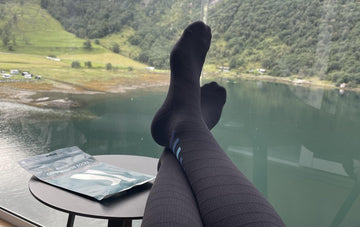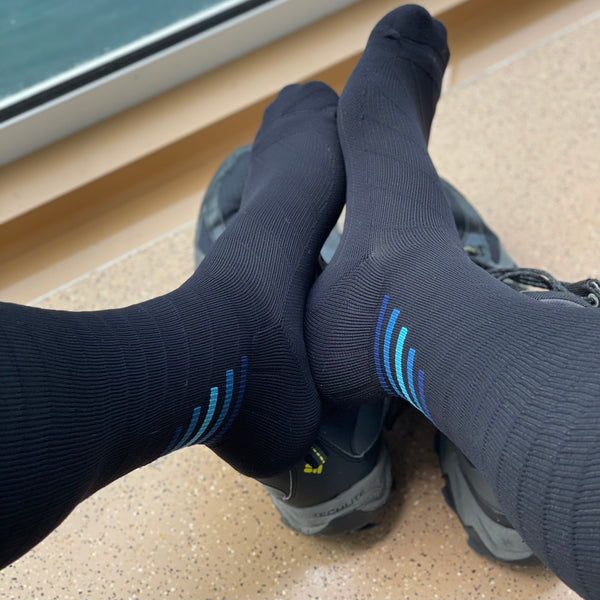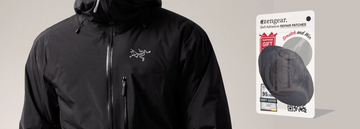On Your Feet: How Compression Socks Address Common Health Issues
by Emily Jannet on Sep 13, 2023
In our fast-paced world, where demands on our bodies are constantly increasing, it's essential to prioritize our health and well-being. One often overlooked but highly effective solution to various everyday problems is compression socks. These unassuming garments have been gaining popularity for their ability to address a range of issues, from health concerns to performance enhancement. In this blog post, we will delve into what problems compression socks solve and why you should consider incorporating them into your daily routine.
What Are Compression Socks?
Compression socks are specialized hosiery garments designed to provide graduated pressure to the legs and feet. Unlike regular socks, compression socks are engineered to exert a controlled amount of pressure, typically tighter at the ankle and gradually decreasing up the leg. They are made from a blend of elastic materials that help support blood circulation and reduce swelling. These socks come in various lengths, including knee-high, thigh-high, and full-length stockings, catering to different needs and preferences.
Solving Circulation Issues
One of the primary problems compression socks solve is poor blood circulation. Many individuals, especially those who lead a sedentary lifestyle or have certain medical conditions, suffer from circulatory problems in their lower limbs. Compression socks work by applying gentle pressure to the blood vessels in the legs, aiding the upward flow of blood towards the heart. This, in turn, helps to:
Prevent Blood Clots: Deep vein thrombosis (DVT) is a serious condition where blood clots form in deep veins, often in the legs. Compression socks are commonly prescribed to reduce the risk of DVT, especially during long-haul flights or periods of immobility.
Alleviate Varicose Veins: Varicose veins are swollen and twisted veins that often appear in the legs. Compression socks can provide relief by improving blood flow and reducing the discomfort associated with varicose veins.
Reduce Swelling: Whether it's from prolonged sitting, standing, or pregnancy, swelling in the legs and feet can be both uncomfortable and unsightly. Compression socks help reduce this swelling by aiding the return of blood and fluids to the heart.
Enhancing Athletic Performance
Compression socks are not just for medical use; they have also found their place in the world of sports and fitness. Athletes, from runners to cyclists to triathletes, have embraced compression socks for several reasons:
Faster Recovery: After intense workouts or competitions, muscles can become sore and fatigued. Compression socks help reduce muscle vibration and increase blood flow, which accelerates the recovery process and decreases post-exercise muscle soreness.
Improved Endurance: Athletes often report feeling less fatigued when wearing compression socks during activities. The improved circulation can lead to increased endurance, allowing athletes to push themselves further.
Injury Prevention: Compression socks offer extra support to the muscles and tendons in the lower leg. This support can help reduce the risk of injuries such as shin splints and Achilles tendonitis.
Alleviating Edema and Lymphedema
Edema and lymphedema are medical conditions characterized by the accumulation of excess fluid in body tissues, typically in the arms or legs. These conditions can be painful and limit mobility. Compression therapy, through the use of compression socks, can help manage these conditions by facilitating the movement of excess fluid back into the circulatory system.
Managing Diabetes-Related Issues
Diabetes can lead to various complications, including neuropathy (nerve damage) and poor circulation in the feet. Compression socks can play a crucial role in managing these issues by promoting better blood flow, reducing the risk of diabetic ulcers, and providing additional support for diabetic patients.
Relieving Aching and Tired Legs
Many people, even those without specific medical conditions, suffer from aching and tired legs due to prolonged periods of sitting or standing. Compression socks can provide relief by preventing blood from pooling in the lower extremities, thus reducing the sensation of heaviness and discomfort.
Enhancing Travel Comfort
Long journeys, whether by car, plane, or train, can take a toll on our bodies. Prolonged sitting can lead to swollen ankles, discomfort, and an increased risk of DVT. Compression socks are a travel essential for many, as they help maintain healthy circulation and minimize the negative effects of extended travel.
Post-Surgery Recovery
After surgical procedures, patients are often required to wear compression garments to aid in healing and reduce the risk of complications. Compression socks are commonly prescribed post-surgery to help prevent blood clots, manage swelling, and promote a faster recovery.
Pregnancy and Maternity Support
Pregnancy can bring about a host of circulatory issues, including swollen ankles and varicose veins. Compression socks designed for maternity provide support for expectant mothers, helping them stay more comfortable throughout their pregnancy.
Conclusion
Compression socks are versatile garments that address a wide range of problems, making them a valuable addition to many people's daily routines. Whether you're an athlete looking to boost performance, a frequent traveler seeking comfort, or someone managing a medical condition, compression socks offer an effective and accessible solution.
However, it's crucial to consult with a healthcare professional before using compression socks, especially if you have underlying medical conditions or are unsure about the proper compression level for your needs. When used correctly, compression socks can make a significant difference in your overall health, comfort, and well-being, helping you overcome the everyday problems they are designed to solve.






